| Date | Sunday 14th March 1999 |
| Time | 1200 (UTC-3) |
| Position | Latitude 67°48' South
Longitude 068°35' West Approaching Rothera base |
| Next destination | Signy Base |
| ETA | 27th March 1999 |
| Total distance | 21655.7 Nautical Miles
(Since departing Grimsby on 17th October 1998) |
| Current weather | Partly overcast with squally winds |
| Wind | 30 knots |
| Sea state | Fresh |
| Air temperature | 0.0°C |
| Sea temperature | 0.4°C |
Ship's
track - Updated every six hours from the weather observations sent
to Bracknell weather centre - direct from BAS
homepage.
Summary
Departed Stanley on Tuesday 9th March and headed south towards the Antarctic
Peninsula in good weather. As the ship passed through the Narrows
(the entrance to Stanley Harbour) the four BAS twin-otter aircraft
flew overhead on their way to Montevideo and the first leg of their long
journey back to the UK.
A small group of dolphins also joined us briefly at the same time.
The weather on departure was lovely and certainly the first day out was
to be a calm one.
Tuesday morning saw a change in the weather the wind picking up to 30
knots and the ship starting to roll a little. By Wednesday the weather
had deteriorated and
the ships movement was probably the worst seen throughout the whole
season, with some rolls in excess of 35°, and everyone was looking
forward to Friday
morning when we would be in the shelter of the Northern Peninsula.
However, the weather had eased by Thursday afternoon and whilst the vessel
was still rolling, it
was only slight and almost pleasant.
For the duration of the Drakes Passage crossing there was little to
see and so nothing to report. However, Friday morning saw us approaching
the Antarctic
Peninsula and our first sighting of land was Smith Island as we approached
the Boyd Strait. In the morning one of the many regular fire and boat drills
was held, with
the Chief Officer using synthetic smoke to fill the Fo'c'sle and placing
a dummy (as a casualty) in one of the stores. As soon as the smoke was
spotted, the alarm was
sounded and the ship went to emergency stations and two teams set about
getting dressed in breathing apparatus, in preparation to tackle the simulated
fire. The
actual fire consists of a sign saying 'Fire' and this has to be located
and then 'extinguished', along with recovery of the casualty. Should the
Chief Officer think that the
teams are not responding as fast as they could, or that something has
been overlooked, he will go around and spread the fire (using more signs),
thus making it more
difficult. Once the exercise is over the ship then practices boat stations,
where all assemble at their respective lifeboat and enter them as though
the ship was to be
abandoned. These exercises are very important to ensure the safety
of the vessel at all times. Fire is probably the most dangerous thing to
happen to a ship at sea as
it can occur at any time and in almost any space, and the only people
available to tackle it are the ships company. All undergo regular fire-fighting
courses ashore and
this is then followed up by the on board exercises. Boat drills are
also carried out on a regular basis plus every time new people join the
ship (for example on leaving
Rothera there will be a full boat drill so that those leaving the base
can practice putting on life jackets and know which of the four lifeboats
they are to use in the event
of an emergency). It is always worth remembering that the best lifeboat
is the ship itself and abandoning would only be considered if no other
alternative were
available. Fridays tends to be the day assigned for these exercises
and they are sometimes referred to as 'Fire and Flood' or 'Board of Trade
Sports Day'!
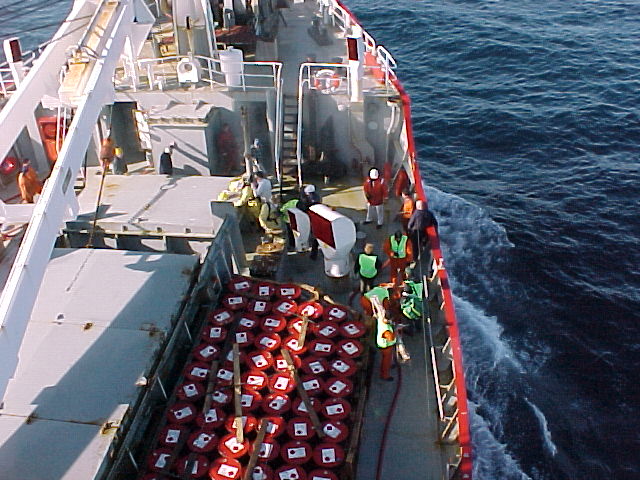
During the early hours of Saturday morning the American vessel Lawrence M Gould passed us as she headed north for Ushuaia, having departed from the American Palmer Station earlier in the evening with outgoing staff. Palmer Station has ship visits throughout the winter as the base is fairly accessible by ship all year round. It is hoped that the Bransfield will be visiting Palmer next weekend, when they are also expecting a visit from their ship Nathaniel B Palmer. By 0800 on Saturday we were approaching Port Lockroy, an Antarctic Heritage Trust Site, where two people have been looking after the old base on Goudier Island and opening it to visiting tourists. During the period from November through to March they have had 75 tourist ships and thirty yachts visit, somewhere in the region of 5,500 people coming ashore to look around the island and the building. This is now the most visited tourist attraction in Antarctica. There is a small shop and also a Post Office. The hut has been fully restored and now exhibits historical items that were used throughout the time that it was an active base.
Port Lockroy is a harbour, 0.5 miles long and wide, located between Flag Point and Lécuyer Point on the west side of Winecke Island in the Palmer Archipelago. Discovered during the French Antarctic Expedition of 1903-05 by Charcot, and is named for Édwouard Lockroy, the French politician who helped Charcot obtain government backing for his expedition. The harbour provides excellent protection from the prevailing winds and is an ideal haven for yachts. This winter an Australian, Trevor Robertson, will be staying there on board his yacht Iron Bark
In 1943 the first permanent occupation of Antarctica started at Port Lockroy, although whaling operations were carried out prior to this using floating factories, during Operation Tabarin (a British Naval Expedition) with a nine man team deployed. In 1945 the Falkland Islands Dependencies Survey (FIDS) was formed and took over the administration and running of Port Lockroy and the other bases established during Operation Tabarin ( Deception Island and one year later Hope Bay). The base was not manned continually, being evacuated for the winters of 1947, 1948, and 1950, finally closing in January 1962.
The Duke of Edinburgh, during his world tour, visited Port Lockroy in
January 1957 on board the Royal Yacht Britannia, accompanied by HMS Protector.
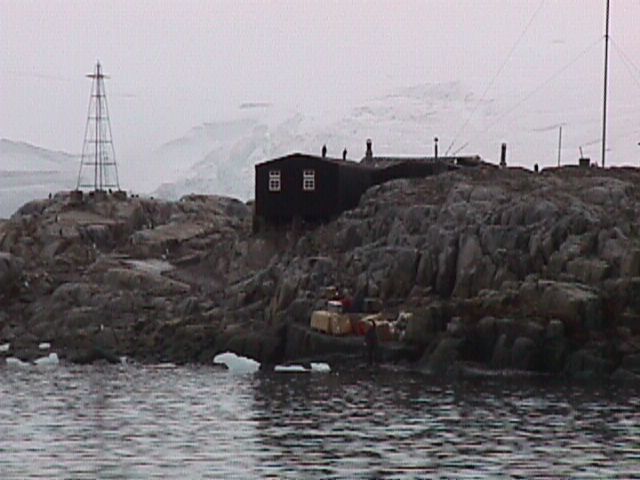
The uplift of the two man team at Lockroy took less than an hour and
we were soon underway again, heading for the Ukrainian base Vernadsky.
The route would take us through some of the most scenic parts of Antarctica,
in particular the Lemaire Channel. The channel is approximately five miles
long and for several miles it is less than half a mile wide, with the sides
rising almost vertically to heights of around 1000m, covered in snow and
looking majestic. When the weather is good the views are stunning and the
Lemaire Channel is sometimes known as Kodak Alley, as it is so popular
with photographers. Unfortunately the weather for our passage was not so
good, with low cloud masking the peaks and reducing the visibility as we
progressed. Just as the Bransfield entered the channel a yacht, Blue
Northern from Miami, came out of the channel, on its way to Port Lockroy.
Throughout the passage down the channel there were several whales also
heading south and seen blowing at regular intervals. The visit to Vernadsky
base was to drop off Vicky Auld, one of the outgoing wintering team from
Halley, who will remain with the Ukranian team for some eight to ten days
to do some work with them and download data from some automated instruments
before joining us again as we head north. As the Bransfield prepared to
launce
Erebus for the short trip through the Meek Channel to the
base, another yacht was sighted. The was the British yacht The Dove,
which had sailed from the Canary Islands in November for the trip to Antarctica
and was now heading for Ushuaia and had eight people on board. Once again
there were several whales in the vicinity of Vernadsky, possibly Fin or
Sei whales. Our visit to Vernadsky was very brief and once again we headed
off, setting course for Rothera base. All being well we should arrive at
about 1430 this afternoon. Due to ice conditions the ship will be taking
the slightly longer route to the west of Adelaide Island as opposed to
going via Matha Strait (at the northern end of Adelaide) and then down
through The Gullet, a narrow channel between Adelaide Island and the Arrowsmith
Peninsula.
Forthcoming Events
Arrive Rothera at 1430 and begin final relief of base. Depart on 18th March for Signy base, via Vernadsky and Palmer and incorporate a Marine Life Science Division diving programme.
Sunday 4th April 1999, 1200 UTC on ITV. Further coverage of the ITN visit to Antarctica on board the Bransfield.
GM0HCQ/MM QRV 14052kHz @ 2030z & 0000z
The next update will be written on Sunday 21st March 1999 and should
be published on Monday 22nd March 1999.
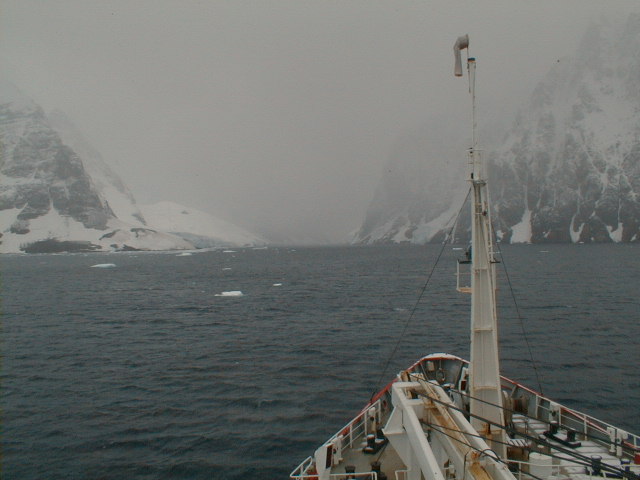
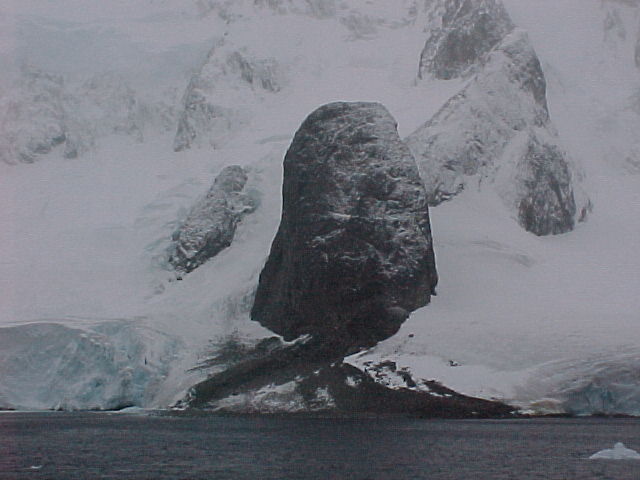
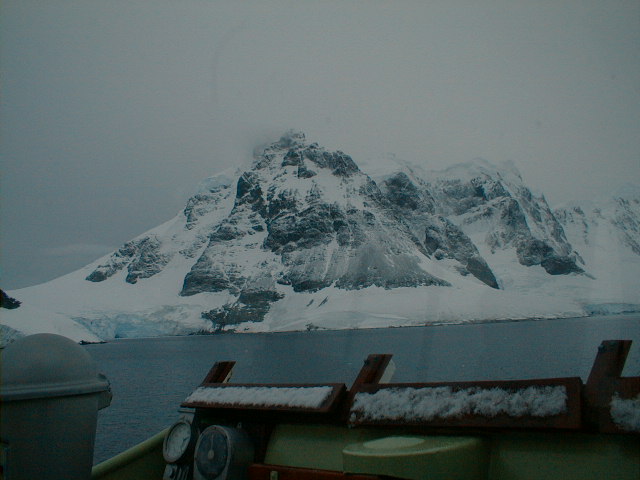
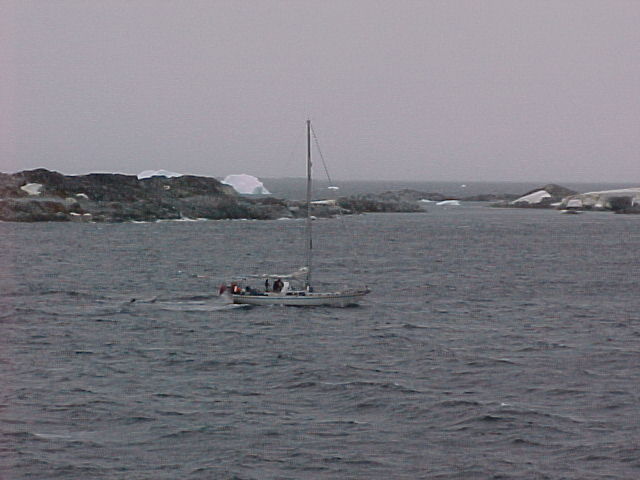
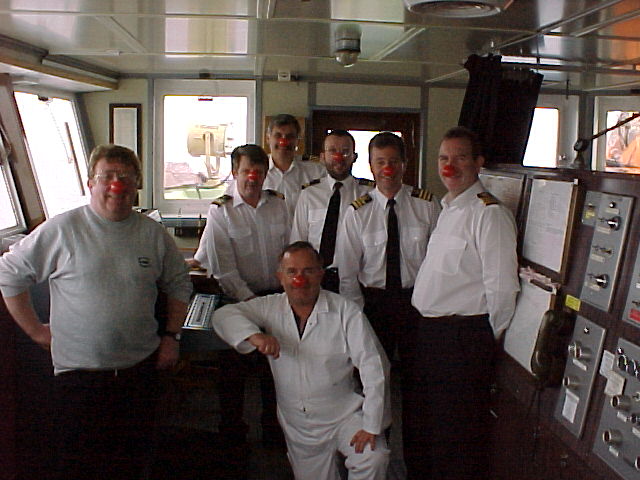
Last updated 15/03/1999 - webmaster@dartcom.co.uk